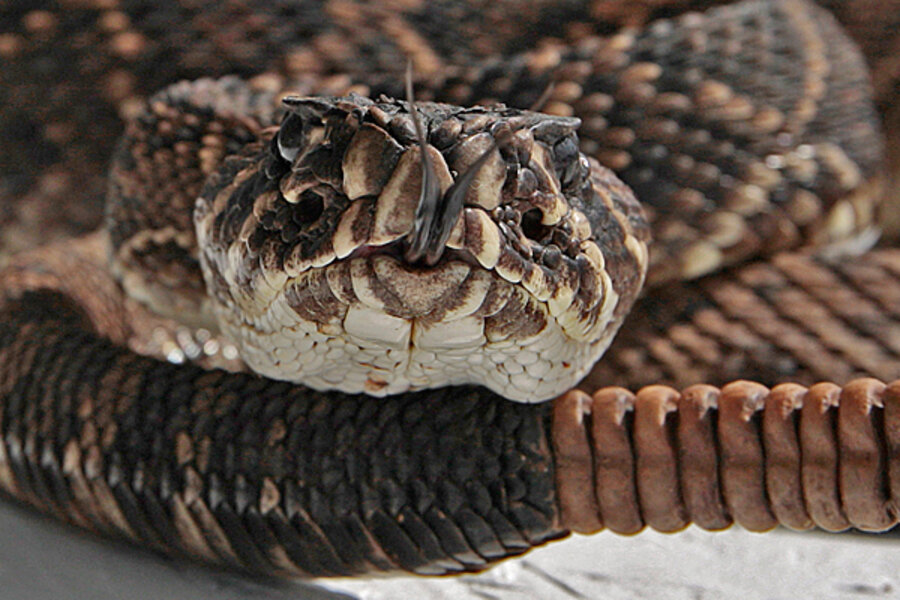Snake decline likely in America, too, say biologists
Loading...
| Boston
The snake decline reported this week across Europe and Africa could well be happening in America as well, say biologists.
“If you get your average herpetologists together, you’d probably arrive at a consensus that a lot of scientists feel that even across their own lifetimes there are negative changes in terms of population,” says Rafe Brown, chief curator of herpetology at the University of Kansas. “It’s clear that overall the trends are not good and we’re looking at pretty serious declines.”
“The bottom line,” Dr. Brown adds in a telephone interview Thursday, "is that few of these species can survive when 99 percent of their habitat has been turned into subdivisions."
IN PICTURES: Most dangerous snakes
The journal Biology Letters on June 9 published a finding that 11 of 17 snake populations in the United Kingdom, France, Italy, and Nigeria plunged between 1998 and 2002, before stabilizing at a new, lower level. Some populations fell by as much as 90 percent, according to the study from the Centre for Ecology & Hydrology in England, which collected data between 1987 and 2009.
The report's lead author, Chris Reading, says he hopes that his study, the world's first global study on snake populations, will spark more herpetologists worldwide to examine their own data, including in America.
“People are concerned in the United States,” Dr. Reading says in a telephone interview Thursday from England. "It wouldn’t surprise me if it is [declining], but we don’t know.”
'Picture may be worse than it looks'
There are now 1,677 reptiles on the International Union for Conservation of Nature Red List, with 293 added this year. Of these, 469 are threatened with extinction and 22 are already thought to be extinct or extinct in the wild.
“The world’s reptiles are undoubtedly suffering, but the picture may be much worse than it currently looks,” Simon Stuart, Chair of IUCN’s Species Survival Commission, said in a press statement. “We need an assessment of all reptiles to understand the severity of the situation but we don’t have the $2-3 million to carry it out.”
Of note with the recent study on snakes was that the affected populations were in both protected and non-protected environments, hinting at something happening on a global scale.
Global warming is already believed to have caused the extinction of 12 percent of Mexico’s lizard populations since 1975, according to a May 14 report by Barry Sinervo of the University of California in Santa Cruz. His study, published in the magazine Science, argues that nearly 20 percent of all lizard species could be extinct by the year 2080.
Dr. Sinervo delivers a “disturbing message: Climate-forced extinctions are not only in the future but are happening now,” scientists at the University of Washington, Harvard, and Berkley write in a related article titled “Are Lizards Toast?”
“With warming, lizards will spend longer periods in refuges, reducing foraging time, such that net energy gain becomes insufficient for reproduction; extinction ensues,” they write.
Turning point?
Aside from global warming and climate change, loss of diversity and fungus-related diseases (as caused the extinction of the Golden Toad in Costa Rice) are theories for why animal life is dying off at such a rapid pace.
“It’s all of these things at once and it’s turning into the perfect storm of conservation crisis,” says Brown at the University of Kansas. “It’s like a snowball rolling downhill.”
He adds: “The hope is that we call attention to this and the role of these animals in the ecosystem.… Hopefully we look back and realize that 2010 was the year that we recognized this.”
Related:





